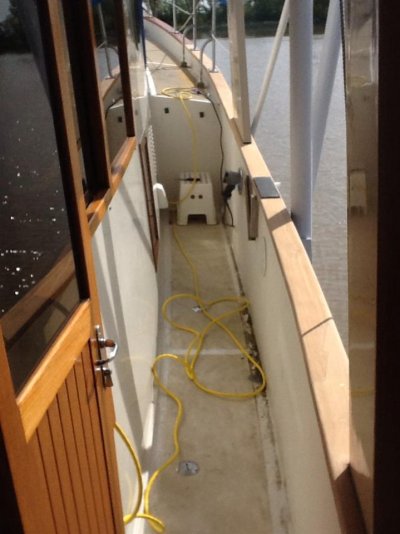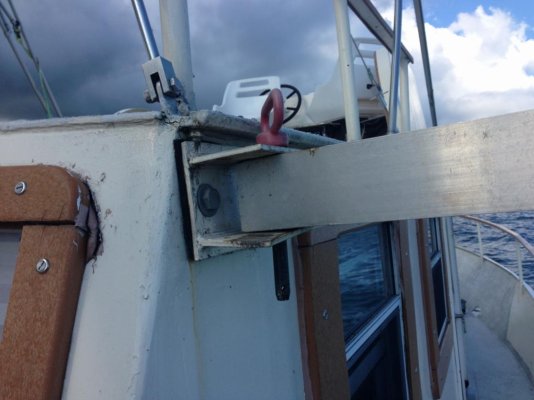seattleboatguy
Senior Member
Every time I read one of Larry's posts, my eyes are drawn to the outriggers on Hobo. I suppose Larry could be trolling for either REALLY big fish or the occasional submarine. But, I suspect there are stabilizers down there somewhere. If this is the case, I would love to hear about them (or maybe you can direct me to a link with similar info). The questions I have (if they are stabilizers) are:
* What is the generic term for that kind of stabilizer?
* Who made them (or are they your own creation)?
* When are they most useful?
* When are they not worth the effort to deploy?
* Is there a danger of the stabilizers striking the hull?
* Is there a danger of the stabilizers striking the prop?
* If the stabilizers snag a submarine, can you keep it?
* What is the step by step process to deploy everything?
* How long does it take to deploy everything?
* Could you switch on Hobo's autopilot and deploy them yourself?
* How do your stabilizers compare to the mechanically pivoting fins attached to the bottom of some trawlers?
* What is the generic term for that kind of stabilizer?
* Who made them (or are they your own creation)?
* When are they most useful?
* When are they not worth the effort to deploy?
* Is there a danger of the stabilizers striking the hull?
* Is there a danger of the stabilizers striking the prop?
* If the stabilizers snag a submarine, can you keep it?
* What is the step by step process to deploy everything?
* How long does it take to deploy everything?
* Could you switch on Hobo's autopilot and deploy them yourself?
* How do your stabilizers compare to the mechanically pivoting fins attached to the bottom of some trawlers?








